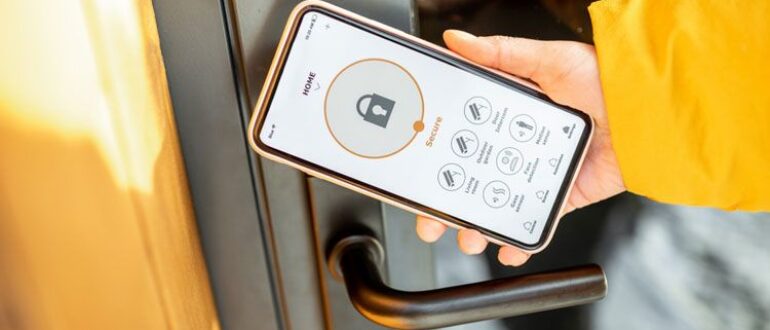Digital locks have revolutionized home and business security, offering convenience and advanced features that traditional locks cannot match. However, like any electronic device, they require proper care to ensure long-term performance and enhance the Lifespan of Your Digital Lock. Without regular maintenance, you might face issues such as drained batteries, outdated software, or malfunctioning keypads. To keep your digital lock functioning at its best, let’s explore the key factors that affect its longevity—battery life, software updates, and troubleshooting common issues.
Battery Life: The Power Behind Your Security and the Lifespan of Your Digital Lock
One of the most common causes of digital lock failure is a dead battery. Unlike mechanical locks, which operate indefinitely, digital locks rely on battery power to function. To avoid being locked out, follow these best practices:
- Use High-Quality Batteries: Avoid cheap or generic batteries that may drain quickly. Opt for alkaline or lithium batteries for longer life.
- Check Battery Indicators: Many digital locks have low-battery alerts. If your lock starts beeping or showing a warning light, replace the batteries immediately.
- Change Batteries Proactively: Instead of waiting for the lock to stop working, set a reminder to replace batteries every 6 to 12 months, depending on usage.
Neglecting battery maintenance could lead to inconvenient lockouts and unnecessary stress. Keep an emergency key or backup power source handy in case of unexpected failure.
Software Updates: Enhancing Security & Performance
Your digital lock is more than just a keypad—it’s an advanced security system with built-in software that controls access and encryption. Just like your smartphone or computer, keeping your lock’s software updated is crucial for security and functionality.
- Bug Fixes & Performance Improvements: Updates often address minor glitches that could cause keyless entry errors or connectivity problems.
- Enhanced Security Protocols: Manufacturers regularly improve security features to prevent hacking attempts or unauthorized access.
- New Features & Compatibility: Some updates introduce better user interfaces, improved Bluetooth or Wi-Fi connections, and enhanced compatibility with smart home systems.
To ensure your digital lock remains secure and up to date, check the manufacturer’s website or mobile app for firmware updates. Many smart locks allow you to update software directly from a connected smartphone.
Troubleshooting Common Digital Lock Issues
Even the most reliable digital locks may experience occasional issues. Here are some common problems and quick fixes:
- Unresponsive Keypad or Touchscreen: If the keypad doesn’t respond, check the battery level first. If the issue persists, clean the surface to remove dust or moisture interference.
- Failed Fingerprint Recognition: Ensure your fingers are dry and clean. If the sensor still doesn’t work, re-register your fingerprint using the manufacturer’s guidelines.
- Bluetooth or Wi-Fi Connectivity Problems: Restart your lock and reconnect it to your smart home system. If issues continue, update the lock’s firmware and reset the network settings.
- Mechanical Jam or Difficulty Locking/Unlocking: Inspect for debris inside the lock mechanism. If needed, apply a small amount of lubricant to ensure smooth operation.
Final Thoughts: Keeping Your Digital Lock at Peak Performance and enhance the Lifespan of Your Digital Lock
Investing in a digital lock adds convenience and security to your space, but regular maintenance is key to keeping it in top condition. By managing battery life, staying on top of software updates, and troubleshooting minor issues before they escalate, you can ensure your lock performs reliably for years to come.
For expert assistance with digital lock maintenance, troubleshooting, and security upgrades, Coal Springs Locksmith offers professional support to keep your system running smoothly. Don’t wait until you’re locked out—reach out today for expert digital lock solutions! Call 954-715-2223



Comments 0